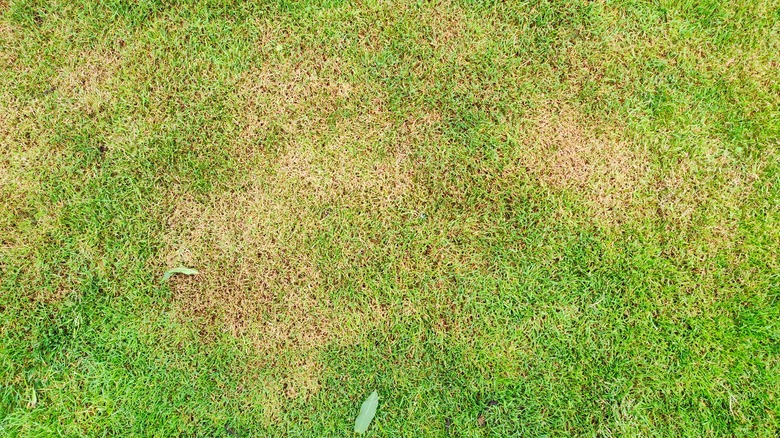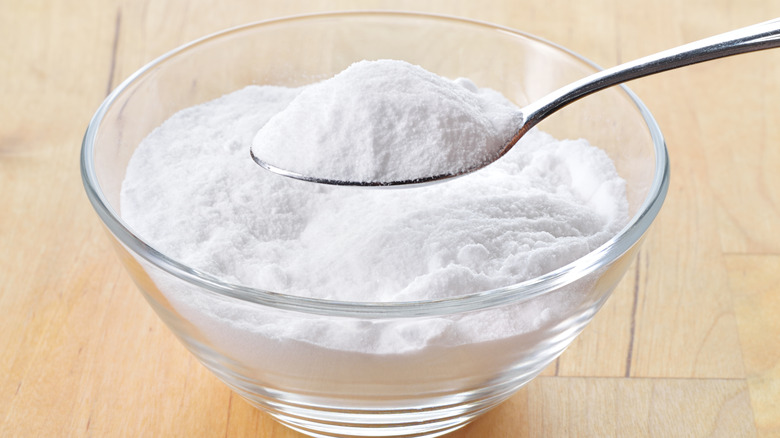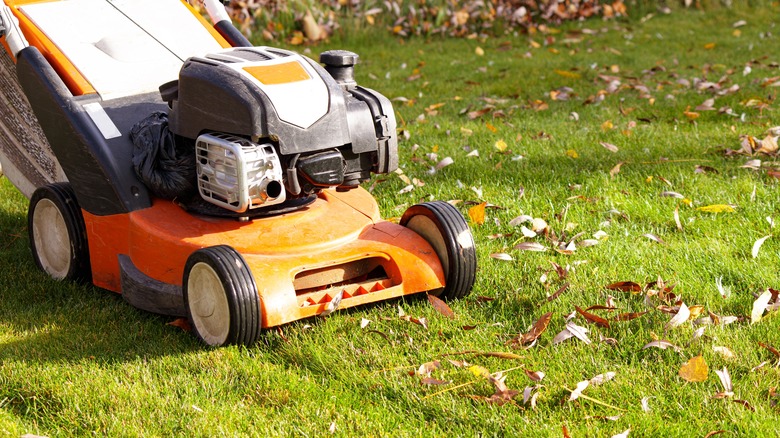Mixing These Pantry Ingredients Can Get Rid Of Lawn Disease (But Should You?)
You once had the most beautiful lawn on the block — but something happened. It became diseased. If you haven't taken care of your lawn properly or if you've overwatered it, you may find that fungus starts growing and has made it look unsightly. You may start to notice patches and discoloration. There are several different fungal diseases out there, and the signs can be similar. For example, if your grass looks rusty orange, not green, then you could be dealing with a condition known as lawn rust. If left unchecked, fungus could even kill your grass.
If you have lawn fungus, using fungicide is the predictable next step. However, typical fungicides can be dangerous, with contact causing skin and eye irritation and respiratory problems. Chronic exposure may even increase the risk of cancer and other health issues. It can also be difficult to choose the right fungicide for your needs and to get the application right. As a safer alternative, some suggest using natural ingredients to kill fungus on your grass instead of relying on harsher chemicals. Recommended ingredients include baking soda, vegetable oil, and dish soap. Baking soda can be particularly useful for killing fungus due to its alkaline qualities.
But should you really use these ingredients? The answer is yes, but use caution. If you use too much of any of these ingredients, they could potentially damage your lawn. If it becomes too alkaline, you may discover yellow patches and the stems may not develop properly.
Using pantry ingredients to repair your lawn
To make a DIY lawn fungicide, mix one tablespoon of baking soda with one tablespoon of vegetable oil and one teaspoon of liquid soap (without detergent). You'll then need to add this to one gallon of water and shake It up well. Then, add the mixture to a spray bottle and spray it on your lawn to kill any fungus that's present. You'll likely need to apply it again every three days or so to start seeing results. Keep in mind that you can also get rid of powdery mildew in your garden with these kitchen staples as well.
Once you use this solution on your lawn, be sure to monitor your grass closely and take note if it seems to be getting worse. If the grass turns yellow or the stems don't develop correctly then you might have used too much of it and your lawn may have become too alkaline. If your lawn has experienced significant damage, you may need to call professionals to help fix the problem.
How to prevent lawn disease in the future
Of course, it's always best to prevent fungus on your lawn in the first place. Some of the main causes of fungus include soil compaction, mowing incorrectly, and overusing fertilizer. To prevent fungus from developing on your grass, you should also avoid the most common watering mistake people make with their lawns: overwatering. Ensure that you're mowing your grass at the right height and that you're not cutting it too short as this can make it more easy for fungus to take hold. It's also a good practice to remove debris as needed. Remove leaves, tree limbs and other types of debris that fall on your lawn to prevent damage.
In addition to these steps, use the correct amount of fertilizer on your lawn, making sure that you're not adding either too much or too little. You should also aerate and dethatch your lawn to eliminate compacted soil and prevent fungus growth. Doing this can help improve air circulation and reduce moisture, making it harder for fungus to thrive. You should aim to aerate your lawn at least once a year, or more often if there is a lot of activity on your grass. Generally, you should dethatch your lawn every few years as well.


